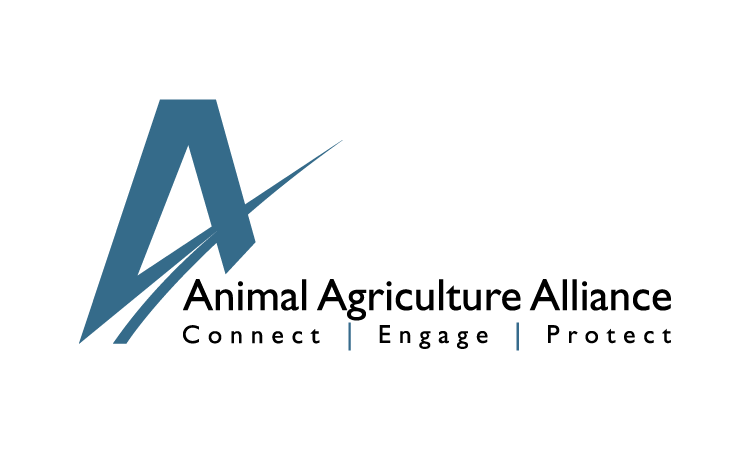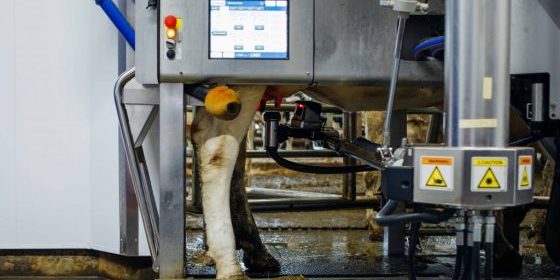When you get the notification on your phone stating that an update is ready, you eventually update it, right? Why? Because you know updates result in your phone working better and therefore making your life easier and more enjoyable. Well, dairy farmers are doing the same thing! They are always striving for continuous improvement. For some farmers, their most recent investment includes switching over to robotic milkers. Although these machines are expensive, some farmers that have adopted the technology describe them as being a good investment because it is paying for labor ahead of time, and these workers don’t call out sick! Plus, they send notifications straight to the farmers’ phones to keep them updated on their cows throughout the day and night.
The Animal Agriculture Alliance recently visited French Brothers Dairy in Virginia and got to see their robots in action.
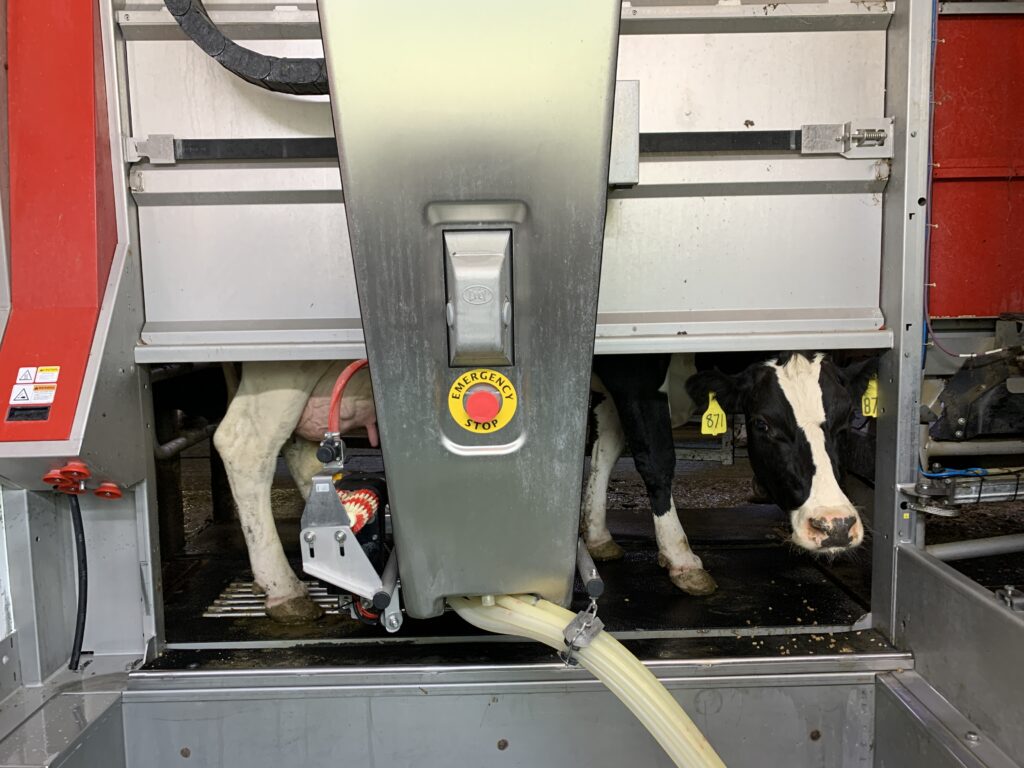
How do robotic milkers work?
Step 1:
As discussed in our post earlier this week, cows on many farms – including those with robotic milkers – wear Fitbit-like technology. This sensor collects a ton of information about each individual cow and records it for the farmer to review. This sensor is what allows each cow to enter the robotic milking stall and be assessed on an individual basis. The cows enter the stall whenever they want to throughout the day. When the cow enters the stall she is given a specific amount of feed based on her nutrition requirements. Cow nutrition needs differ from cow-to-cow just like humans. Cows are milked 2-3 times a day, regardless of the milking method used. The computer registers how often a cow comes in for milking, so a cow coming in that has been milked recently will be released without being milked.
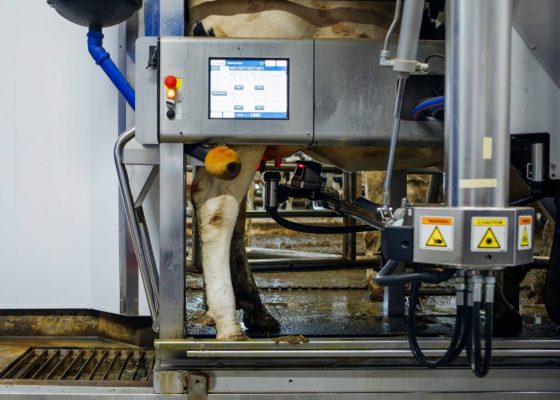
Step 2:
While the cow snacks on her feed, the robotic system begins the milking process. Before milking begins, the robotic arm cleans each of the cow’s teats. Sensors recognize each individual cow’s conformation to attach the milking cups properly. During this time the robot records things such as weight, amount of feed eaten, and how much milk the cow gave. If any of these are unusual for this cow, the farmer gets a notification immediately to check the cow out! Often, these machines pick up on a cow not feeling well before clinical signs begin to show. This makes treatment of the cow more efficient!
Step 3:
Once a cow is finished being milked, usually 3-5 gallons later, the cups detach. The cow’s teats are cleaned one more time and then sprayed with an iodine dip to seal them from dirt in the environment. The cow is then released to enjoy the rest of her day with access to a feed bunk and comfortable bedding. The milking process usually takes about 7 minutes. This means that the cow is only spending 14-21 minutes in the robotic milker each day, and the rest is free-time! Farmers enjoy the extra time saved and now have more time to focus on overall herd health.
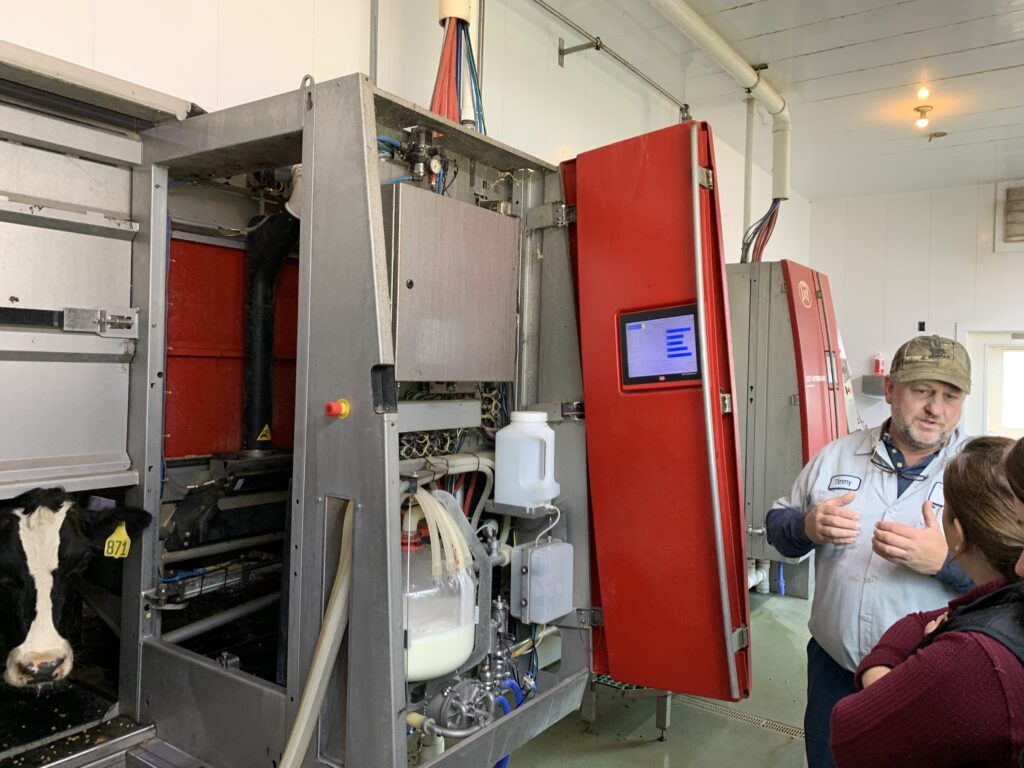
What about cows that are being treated with antibiotics?
Cows are only given antibiotics if they are not feeling well and have an infection. Farmers get a prescription for the antibiotic from a veterinarian. Then, they program the machine so that it knows which cow is on an antibiotic. When this cow enters the stall, it is milked and fed as normal BUT its milk is completely washed down the drain! This continues until the withdrawal period is reached. The withdrawal period is the amount of time that that needs to pass in order for the antibiotic to be out of the cow’s system. To ensure antibiotic residue never reaches consumers, milk trucks test EVERY farm they pick up milk from. If the milk was to come back with antibiotic residues, the entire truck is dumped and the offending farm picks up the bill for the whole truck.
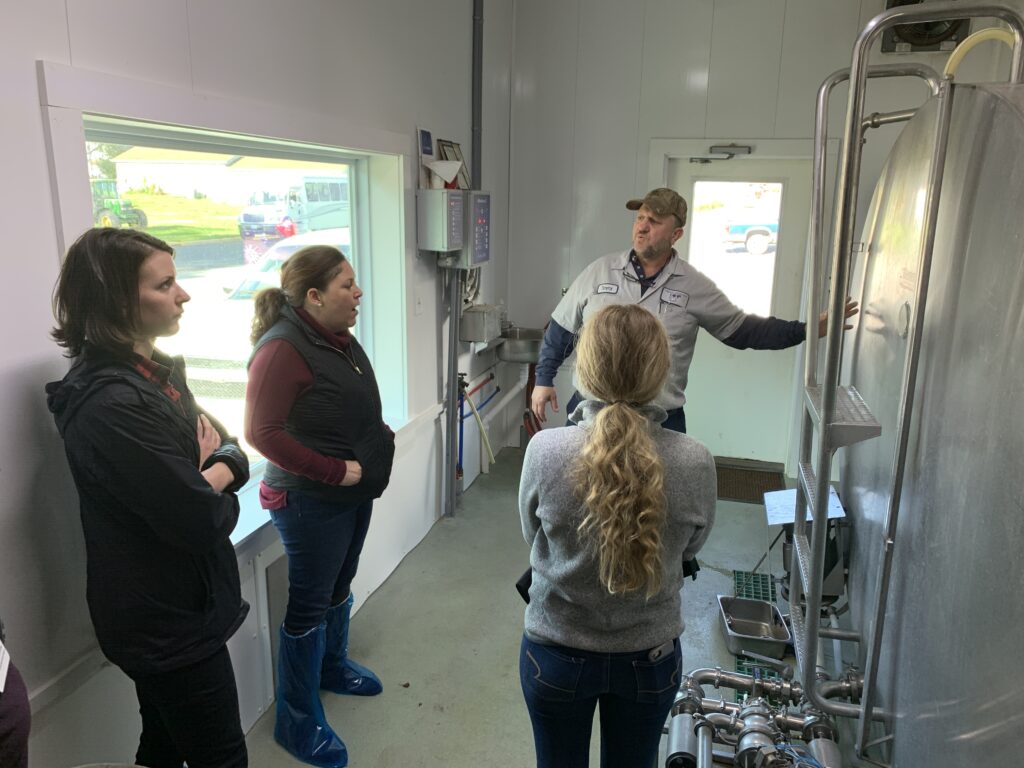
All farmers want a safe and delicious product to arrive to consumers, so they work very hard to ensure all steps are taken.
That’s not all robots do!
Many farms are also incorporating automated feed pushers that move the feed closer to cows as they sort through it. This feed is available to the cows 24/7, 365 days a year. It is called a total mixed ration (TMR) because it is a perfect blend of feeds. It includes forages, grains, protein supplements, byproducts, vitamins, and minerals. The TMR and the grain the cows get in the milk stall allow them to meet all of their nutrition needs. Farmers work hand-in-hand with nutritionists and veterinarians to develop the right TMR for their farm.
All posts are the opinion of the author and do not necessarily represent the view of the Animal Ag Alliance.
